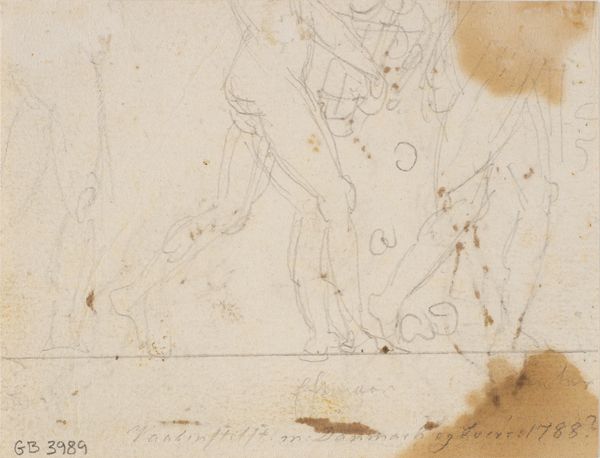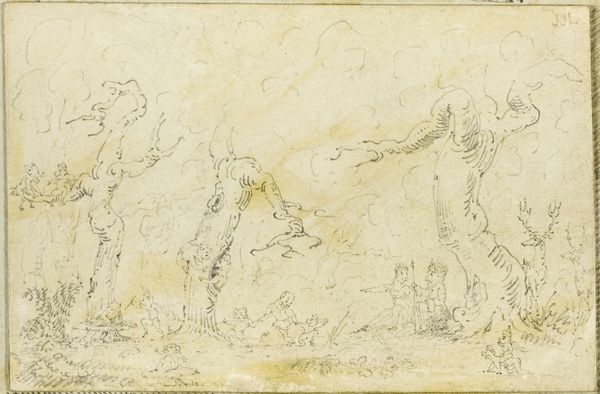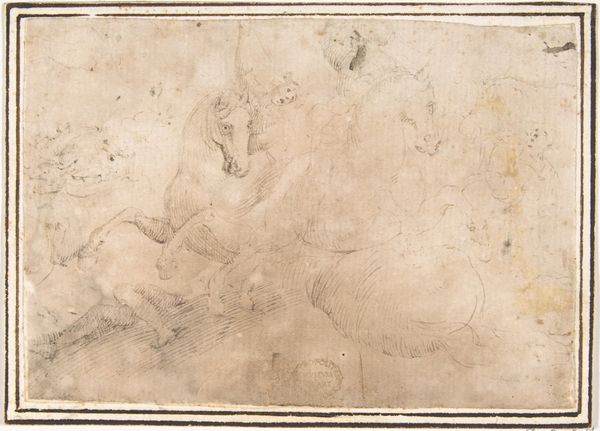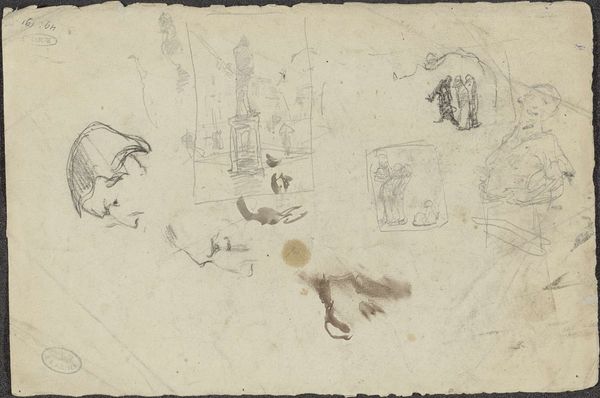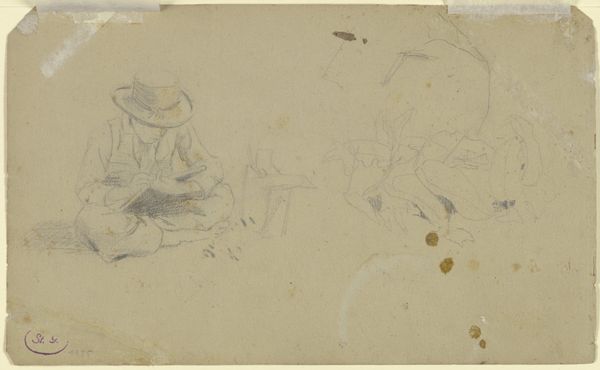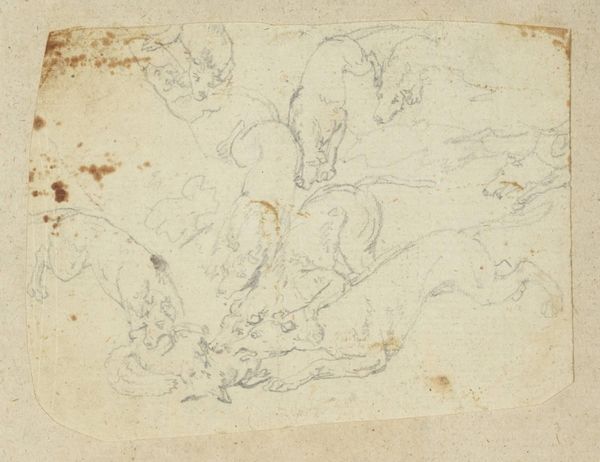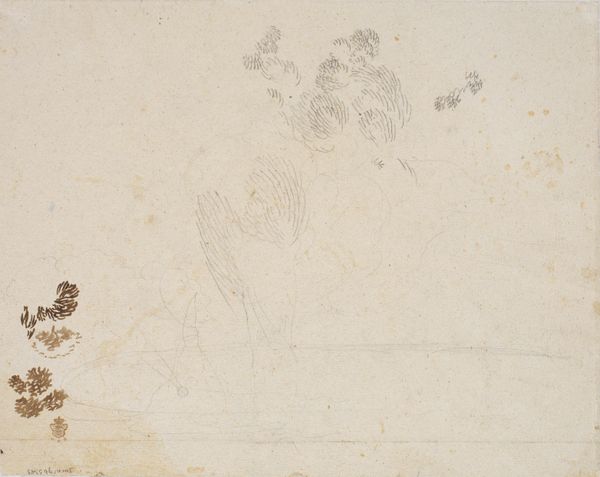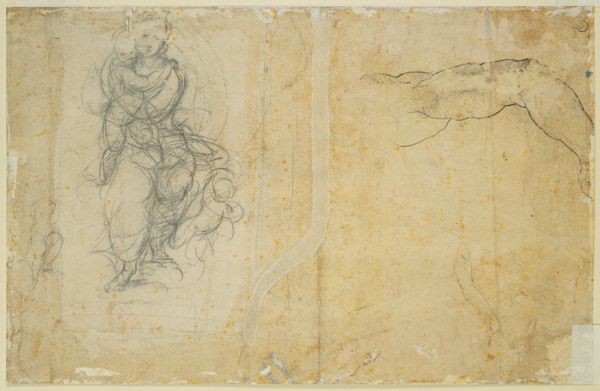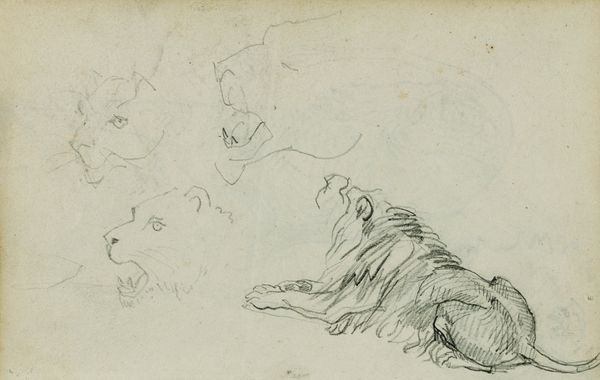
Sketches of an Equestrian Battle and the Head of a Greyhound 1813 - 1814
0:00
0:00
drawing, print, paper, graphite
#
portrait
#
drawing
# print
#
landscape
#
paper
#
underpainting
#
romanticism
#
graphite
#
history-painting
Dimensions: 168 × 225 mm
Copyright: Public Domain
Curator: Looking at this graphite drawing by Théodore Géricault, titled "Sketches of an Equestrian Battle and the Head of a Greyhound," created around 1813-1814 and now housed here at The Art Institute of Chicago, my first impression is of a frenetic energy barely contained on the page. What do you make of it? Editor: It feels ephemeral. The thin graphite lines barely define the forms, yet they evoke a dynamic sense of movement and tension, particularly within the central mass depicting the equestrian battle. Curator: Indeed. Géricault's Romanticism, with its focus on drama and emotion, often centered around military subjects. The chaos of battle was a key theme across European art during the Napoleonic era, a time of vast societal change, a change he subtly addresses in his work. This work, with the dog included, may allude to different sectors of the state at the time, too. Editor: Notice how Géricault uses the different planes of focus, too. The detailed head of the greyhound, compared to the blur of horses and soldiers, isolates the animal, doesn’t it? The detailed realism contrasts with the rest of the landscape, as though an underpainting were emerging from beneath it. This juxtaposition focuses our gaze onto the one, but reminds us the multitude suffers too. Curator: And the head is rather masterfully drawn, exhibiting keen observation. One can read the influence of history painting traditions on his focus on the head here, where many stories and experiences reside. Editor: Absolutely. He masterfully exploits the tonal range of graphite. He builds forms, almost sculpturally, employing both delicate shading and vigorous cross-hatching, particularly noticeable in the musculature of the greyhound’s head. It reminds me how much detail Géricault must have invested in such portraits. Curator: Well, the dynamism and emotional depth are truly striking in such an early piece, and demonstrate some clear technical choices. It reveals a restless spirit, both historically within Romanticism, and more generally. Editor: Yes, from the fragmented composition to the palpable energy within its lines, this sketch provides insight into the artistic processes behind his grander, more finished works, doesn’t it? It helps us appreciate the way the artist works on many levels.
Comments
No comments
Be the first to comment and join the conversation on the ultimate creative platform.
